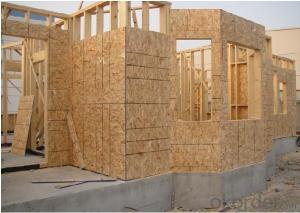Waterproof plywood is an essential material for any construction project, particularly in areas where moisture is a common issue. This versatile and durable material is designed to withstand the test of time, even in the most challenging environments. In this article, we will explore the benefits of using waterproof plywood, its applications, and how it can be the perfect solution for moisture-prone areas.
The Science Behind Waterproof Plywood
Waterproof plywood is made from layers of wood veneer that are bonded together using a water-resistant adhesive. This adhesive creates a barrier that prevents moisture from seeping into the plywood, ensuring its longevity and durability. The manufacturing process involves high temperatures and pressure, which further enhance the plywood’s resistance to moisture and other environmental factors.
Why Choose Waterproof Plywood?
Choosing waterproof plywood over traditional plywood has several advantages. It offers superior resistance to moisture, making it ideal for use in bathrooms, kitchens, and other areas where water exposure is common. Additionally, it is more resistant to rot, decay, and fungal growth, ensuring a longer lifespan for your construction projects.
Applications of Waterproof Plywood
Waterproof plywood can be used in a variety of applications, from structural components to decorative elements. Some common uses include:
– Flooring: Waterproof plywood is perfect for areas that are prone to water damage, such as basements and bathrooms.
– Walls: It can be used as a backing for tile or other moisture-resistant materials, providing a stable and durable surface.
– Roofing: Waterproof plywood is an excellent choice for roofing applications, as it can withstand heavy rain and snow without warping or rotting.
– Furniture: For outdoor furniture or pieces that will be exposed to moisture, waterproof plywood is a smart choice.
– Marine Applications: Boats and other marine structures benefit from the durability and water resistance of waterproof plywood.
Installation and Maintenance
Installing waterproof plywood is similar to traditional plywood, but with a few extra considerations. Proper sealing and finishing are crucial to ensure its water resistance. Regular maintenance, such as checking for signs of moisture or damage, will help prolong its life.
The Emotional Connection to Waterproof Plywood
While it may seem odd to discuss the emotional connection to a building material, waterproof plywood can evoke a sense of security and comfort. Knowing that your home or project is protected from the damaging effects of moisture can bring peace of mind. This material is not just a practical choice, but also an expression of care for the longevity and well-being of the space.
The Future of Waterproof Plywood
As environmental concerns and sustainable building practices become more prevalent, the demand for waterproof plywood is likely to increase. Its durability and resistance to moisture make it an eco-friendly alternative to traditional plywood, reducing the need for replacements and waste.
Conclusion
In conclusion, waterproof plywood is a versatile and reliable material for any construction project in moisture-prone areas. Its unique properties offer numerous benefits, from increased durability to a sense of security. By choosing waterproof plywood, you are making a smart investment in the future of your project, ensuring that it stands the test of time.

